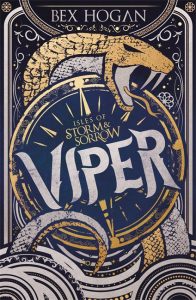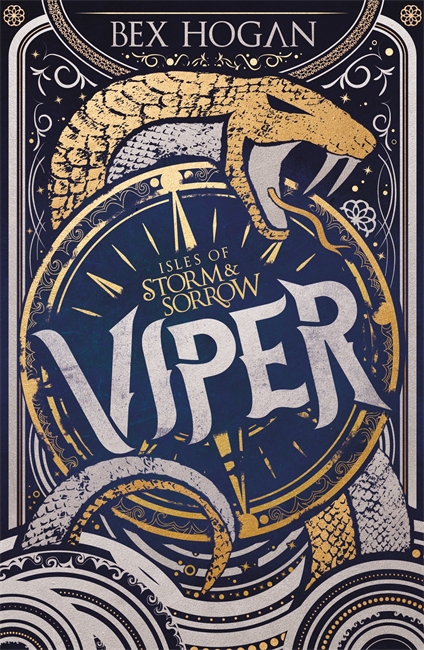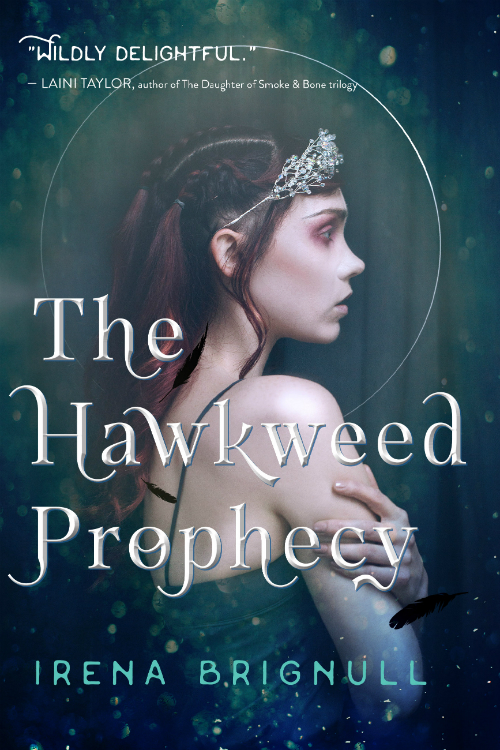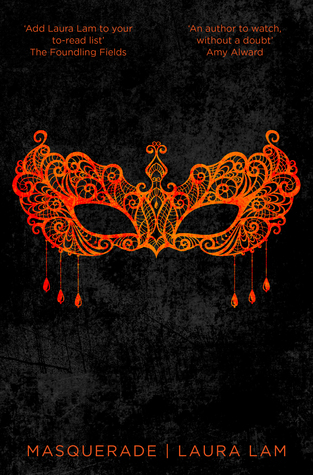We have a brand-new Author Takeover from debut British epic YA fantasy author Bex Hogan. Her dazzling trilogy starts with Viper, out last month, and it’s an immersive and swashbuckling new fantasy trilogy perfect for fans of Sarah J. Maas and Leigh Bardugo. Truly fantastic, it’s guaranteed to get your heart racing.
Marianne has been training to be the Viper for her entire life – to serve and protect the King and the citizens of The Twelve Isles – but to become the Viper and protect the islands she loves she must find the strength to defeat her father.
A brave heroine. An impossible dilemma. An epic new fantasy trilogy set on the high seas.
Bex joins us today to discuss the sneaky, snaky symbolism and mythology in Viper and the Potterverse and why some people might be surprised to find out she’s not a Slytherin.

VENOMOUS VIPERS
I have a confession to make. I am not a Slytherin. Despite believing that I possess many Slytherin traits (“Highly developed sense of self-preservation”? Hello? What author doesn’t?!), the Sorting Hat placed me in Hufflepuff, and who am I to argue? But I like to think the Hat hesitated for a moment when weighing up where to put me. Because I feel very drawn to the House with a bit of a reputation.
Whether it’s the emblem of Slytherin House, Nagini, the Basilisk or Harry’s ability to speak Parseltongue, it’s safe to say snakes feature heavily in the world of Hogwarts. It’s no surprise, really, considering snakes have appeared in literature from the earliest creation mythologies. They can be found through all cultures – from Egyptian to Indian, from Aboriginal to West African – snakes have been present since the start of all stories.
Though there are no actual snakes in Viper, symbolically they play a vital role. For most people, the immediate association is with evil, in part due to stories such as the serpent in the Garden of Eden, representing the devil and temptation. The Basilisk in the Chamber of Secrets is as lethal as they come – venomous fangs will finish you off if you manage to avoid looking into eyes that kill you instantly. Snakes are deadly, they’re silent, they’re cold-blooded – in short, everything you would expect an assassin to be. Think snakes, and you are more than likely to imagine something sinister, an underlying feeling I wanted to convey about the crew in Viper.
But there’s more to snakes than just a connection to evil. In fiction, they’re often portrayed as guardians in some capacity – Nagini protects part of Voldemort’s soul, the Hydra guards the entrance to the Underworld, and Kaa in the Rudyard Kipling stories is a keeper of wisdom and a mentor to Mowgli. The Gorgon Medusa’s name even means “guardian” or “protectress.” This is a theme I have carried through into Viper: Captain Adler is the Viper to the King of the Eastern Isles – a role originally created for the sole purpose of defending the Twelve Isles. But Captain Adler is guarding more secrets than he is the islands’ safety. . .
Just as Adler’s motives and nature are unclear, so the symbolism of snakes can be ambivalent. Not only are they seen as evil, but they are also representative of rebirth. By shedding their skins, they are known for their transformative ability, another idea that features heavily in Viper. With a cast of characters all hiding their various secrets, what may appear to be the case at the start of the book may not necessarily be the same by the end. In some cases, it may be a literal transformation; in others, it may be the shedding of a duplicitous skin. Because, often, serpents in mythology have more than one head. Medusa had many snakes instead of hair, venomous and powerful. The Hydra had multiple heads, though the number varies from story to story. In some versions, for every head cut off, two more would grow back in its place. And so it is in Viper that there is more than one side to most characters, and how then do you know what to trust?
Snakes in fantasy are also frequently linked with water. The Hydra, for example, is a water monster in Greek and Roman mythology, who lived in the lake of Lerna. In Norse mythology, Jӧrmungandr was a sea serpent who encircled the whole of Midgard. Some accounts even say sailors mistook this extremely long serpent’s back for islands. All the Hogwarts Houses are associated with one of the four elements, and Slytherin’s is water, something the house colors of green and silver reflect. In Viper, the Six Isles and their surrounding waters provide the backdrop for the whole story. The King’s assassins sail the seas around the islands and are synonymous with the water. As deadly as any sea monster, their ship cuts through the ocean like a predator, silent and lethal. So it made sense to me that the Captain should be called the Viper, cunning and ready to strike, and his crew known as Snakes. They are true sea serpents that just happen to live on the water, not under it.
I think it’s fair to conclude that humans have long held a primal fascination with snakes. Are they something to be revered? Or feared? Often, it appears to be both. But just as Slytherins are not all evil, nor are snakes. Perhaps it is the mystery surrounding this ambiguity that is the secret to their appeal, in which case, we can expect to continue to find snakes inextricably linked to mythology for many years to come.
Raised on a healthy diet of fantasy and fairy tales, Bex Hogan has spent much of her life lost in daydreams. Initially, she wanted to train as an actress, but she quickly realized that she wanted to be a storyteller, not a performer, and soon after created stories of her own. A Cornish girl at heart, Bex now resides in Cambridgeshire with her family.
Viper is available now.





